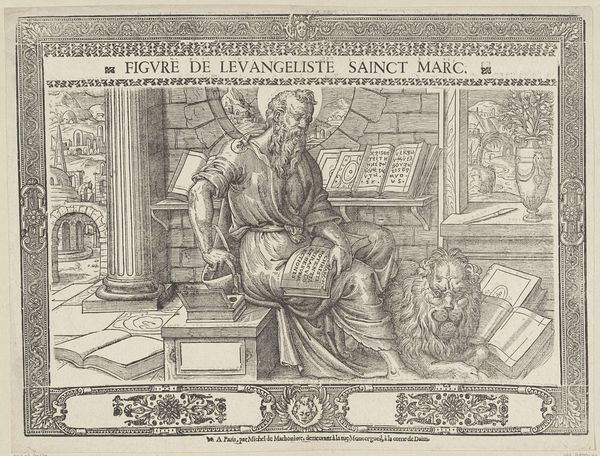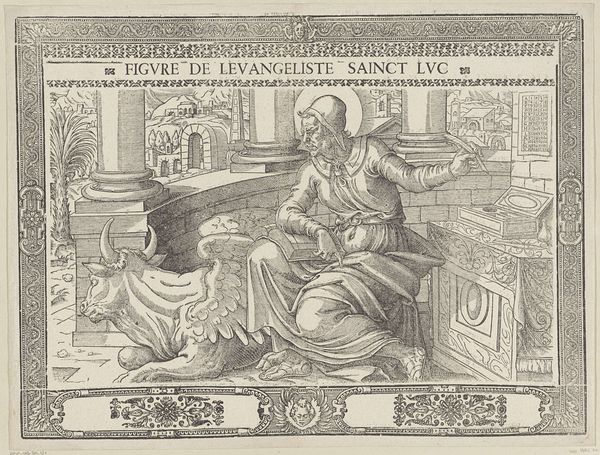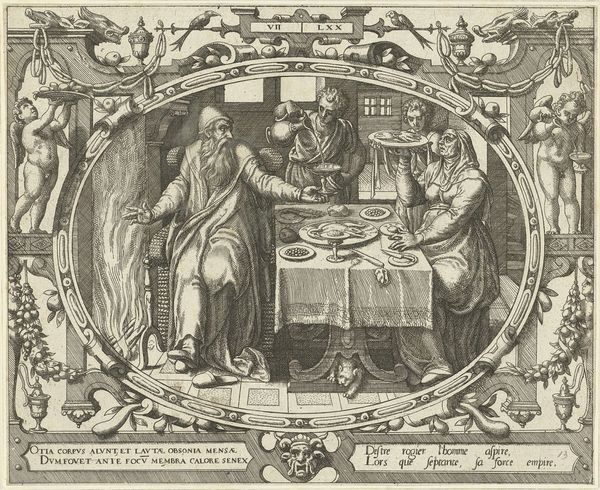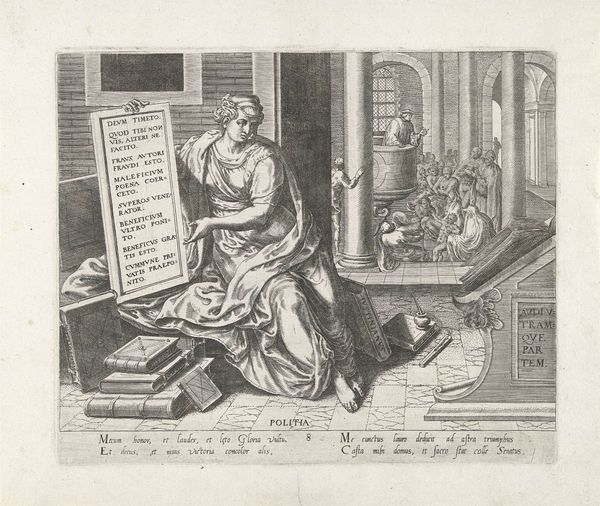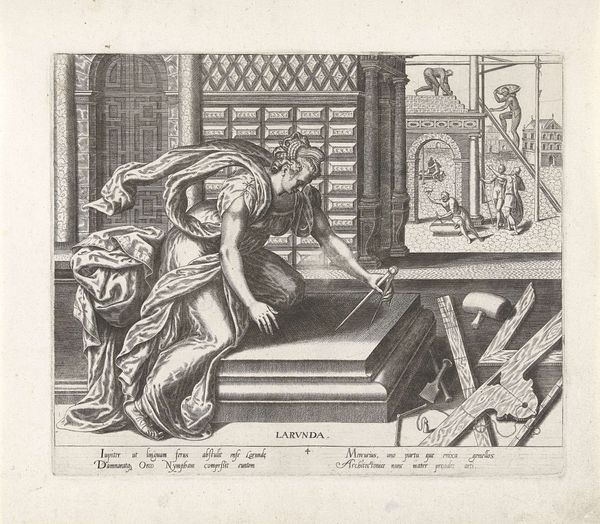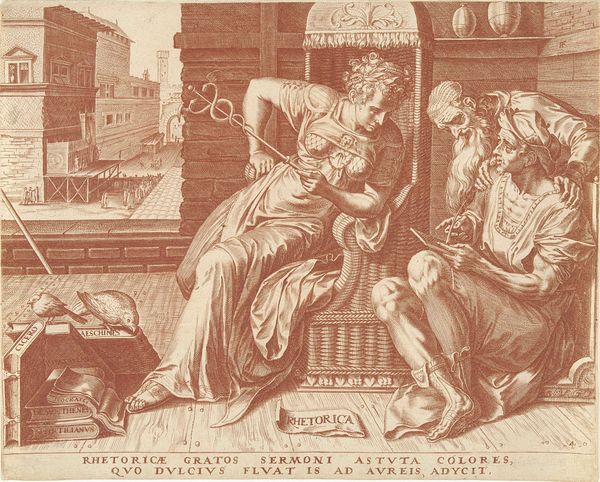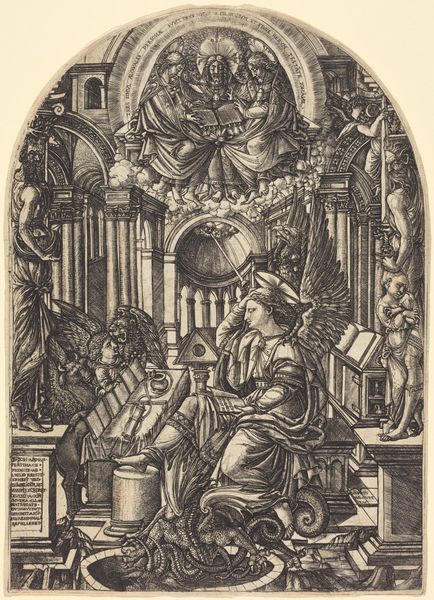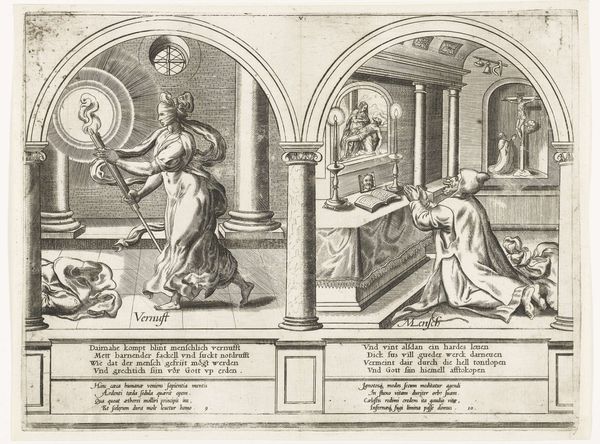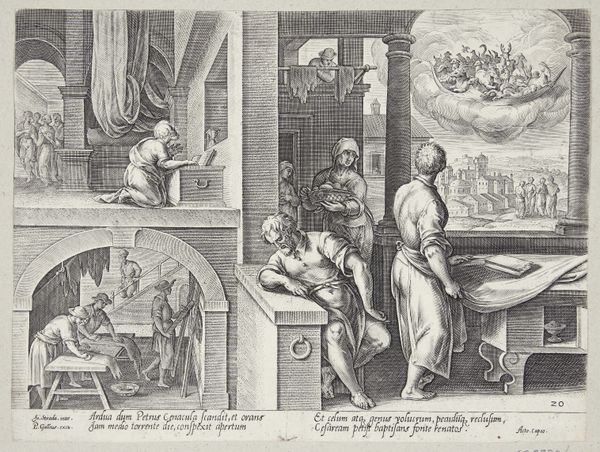
drawing, print, paper, ink, engraving
#
portrait
#
drawing
# print
#
pen illustration
#
old engraving style
#
figuration
#
paper
#
11_renaissance
#
ink
#
pen-ink sketch
#
line
#
pen work
#
sketchbook drawing
#
northern-renaissance
#
engraving
Dimensions: height 384 mm, width 508 mm
Copyright: Rijks Museum: Open Domain
Editor: Here we have Antoni van Leest’s engraving, "Matteüs de evangelist schrijft zijn evangelie," from around 1572 to 1575. It's so intricate and detailed, almost like a scene frozen in time. What resonates with you when you look at it? Curator: The overwhelming density, wouldn't you say? The symbolic load! Here's Matthew, bathed in light, a halo, hard at work. And yet, an angel supports his work… literally holding up a huge tome. How does that imagery strike you, particularly considering the cultural moment of the Renaissance? Editor: It's interesting that you point that out - It feels almost like it’s about divine inspiration mixed with labor, or perhaps the weight of theological work needing angelic assistance. Is the setting important, too? I notice the landscape. Curator: Precisely! See how Van Leest intertwines classical architecture with an almost ethereal landscape. It’s not just a backdrop. Renaissance Humanism sought to reconcile classical knowledge with Christian faith, reflected beautifully in this idealized setting and Matthew himself. What is the emotional resonance here? Does it create order or is there perhaps some tension? Editor: The hourglass might add tension, symbolizing the relentless passage of time, but maybe its inclusion indicates something about diligence too. How the engraving style adds another layer to its meaning as well. Curator: The linear quality intensifies the symbolic depth, linking time to both divine revelation and human endeavour. And consider what is framed within the frame; this scene is forever contained within Renaissance intellectual parameters. It evokes a cultural memory in which both the temporal and divine co-exist. What a powerful blend. Editor: This definitely makes me rethink my initial interpretation. It is more complex than it seemed at first glance, thanks to its historical context and rich symbolism. Curator: Indeed. Images often become so much more eloquent when we begin to understand their languages.
Comments
No comments
Be the first to comment and join the conversation on the ultimate creative platform.
